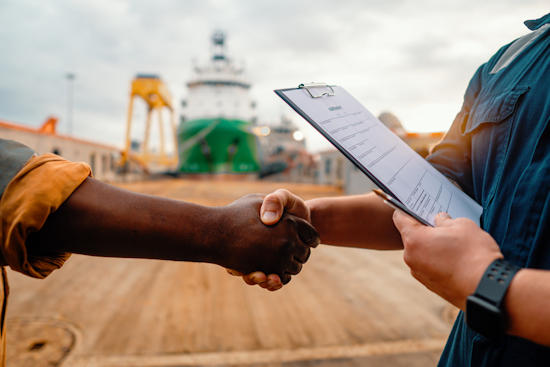
Grab your captain’s hat, and let’s set sail into the world of maritime insurance – trust me, it’s more exciting than it sounds! 🚢💼🌊
The Nitty-Gritty of Ship Insurance Types
Alright, let’s dive into the ocean of insurance types. Think of each type of insurance as a different member of your crew, each playing a crucial role in keeping your maritime adventures smooth sailing.
Hull and Machinery (H&M) Insurance: The Ship’s Bodyguard First up is Hull and Machinery (H&M) Insurance, basically the bodyguard for your ship’s physical form. This is the insurance that covers the bread and butter of your vessel – the hull, engines, and all the essential bits and bobs that keep her afloat and moving. If your ship gets into a scrape with a rogue wave, an uncooperative pier, or has an engine mutiny, H&M is there to cover the repair costs. But remember, every bodyguard has its limits. H&M usually doesn’t cover things like wear and tear or damage from vermin (yes, sea rats are a thing!).
Protection and Indemnity (P&I) Insurance: The Ship’s Lawyer Next, let’s talk about Protection and Indemnity (P&I) Insurance. This one’s like having a savvy lawyer on board. It covers the messy stuff that can land you in hot water – like if your ship accidentally becomes an environmental villain with an oil spill, or if someone on board gets injured. P&I is there to handle liabilities to other ships, damage to cargo, and even some off-the-wall stuff like stowaways. It’s about protecting your back when things go sideways.
Cargo Insurance: The Ship’s Safety Net Then there’s Cargo Insurance. Imagine this as the safety net for all the goodies your ship is carting across the seven seas. This is crucial because, let’s face it, transporting cargo can be a risky business (cue the theme from “The Pirates of the Caribbean”). Storms, theft, and even a container getting a taste of freedom overboard – cargo insurance has your back. And there are different flavors too – some policies cover the cargo from warehouse to warehouse, while others might be more limited.
Additional Specialized Insurances: The Ship’s Special Forces Lastly, we have the special forces of insurance: Freight, Demurrage and Defense (FD&D) Insurance, and War Risks Insurance. FD&D is like having a legal advisor for disputes or contractual woes. And War Risks? That’s for the more Hollywood-esque scenarios – like piracy (yes, it’s still a thing), war, and other hostile actions. It’s not just for those sailing in risky waters; sometimes it’s a requirement for certain regions.
Finding the Perfect Insurance Fit for Your Ship
So, you’re probably wondering, “How do I pick the right insurance for my seafaring beauty?” Fear not! Think of it like choosing the right gear for a sailing adventure. You’ve got to match it to your journey’s specifics. Let’s break it down:
Assessing Your Needs: The Ship’s Tailor-Made Suit First, take a good, hard look at your vessel. Is she a sprightly coastal ferry or a majestic ocean-crossing cargo ship? The type of ship you have, where you’re taking her, and what you’re hauling are your North Star in finding the right insurance. If you’re zigzagging through pirate-prone waters, war risk insurance isn’t just a good idea; it’s a necessity. And if your cargo is more precious than a pirate’s treasure, make sure your cargo insurance is solid gold.
Comparing Policies and Providers: Shopping Around Next, it’s shopping time! But we’re not picking out Hawaiian shirts for the crew. We’re comparing insurance policies. Dive into the details of what each policy covers. It’s like comparing fishing nets – you want one that’s strong enough for your biggest catch without paying for a net that could haul in a blue whale when you’re just after salmon. And don’t forget the provider! Reputation is key. You want a company that’s more dependable than a lighthouse on a foggy night.
Understanding Premiums and Deductibles: The Price Tag Finally, let’s talk money – premiums and deductibles, specifically. Premiums are like your ticket to board the insurance boat. They depend on how risky your ship, route, and cargo are. A journey through calm coastal waters? Cheaper ticket. Sailing through the Bermuda Triangle? That ticket’s going to cost you. Deductibles are like the initial chunk of treasure you agree to pay out of your own pocket when something goes wrong. A higher deductible usually means a cheaper premium, but make sure it’s not so high that it’ll sink your finances if trouble strikes.
And there you have it! Choosing the right insurance for your vessel is all about understanding your specific needs, comparing options like you’re the savviest shopper in the market, and knowing the financial ins and outs. With the right policy, you can sail the high seas with peace of mind, ready to tackle whatever adventures await. 🚢💼💡💰🌊
Smooth Sailing – Keeping Your Ship and Crew Shipshape
Alright, captains and shipowners, we’ve charted the waters of maritime insurance, but navigating smoothly isn’t just about having the right policies. It’s also about being proactive on the high seas. Let’s talk about keeping risks as low as the Mariana Trench.
Risk Assessment and Management: The Captain’s Periscope Think of regular risk assessments as your periscope – they help you spot potential problems before they become maritime misadventures. This isn’t just about looking for cracks in the hull; it’s about understanding everything that can go wrong, from safety hazards to environmental risks. Regular check-ups and assessments mean fewer surprises, and fewer surprises mean fewer insurance claims. It’s like constantly fine-tuning your compass to ensure you’re always on the right course.
Compliance with International Regulations: Your Maritime Rulebook Navigating the maze of maritime laws and conventions can feel like reading an ancient treasure map. But stay with me here – compliance isn’t just about avoiding legal squalls; it’s a key part of your insurance strategy. Keeping up with international regulations means smoother sailing with insurers. They’re more likely to favor a ship that plays by the rules with friendlier premiums and terms.
Regular Maintenance and Safety Training: The Crew’s Toolbox Now, let’s talk maintenance and training. This is the toolbox and training manual for your crew. Regular maintenance is like keeping your ship’s health in check – nobody wants a sputtering engine mid-voyage. And as for safety training? It’s like teaching your crew to swim and navigate; they’ll know how to avoid dangers and handle them if they arise. A well-maintained ship and a well-trained crew are music to an insurer’s ears.
Conclusion and Summary: Your Insurance Compass So, what have we learned on this voyage through the sea of maritime insurance? First, every ship needs its custom-fit armor – the right mix of insurance policies. Assess your needs, compare options carefully, and understand the financials of premiums and deductibles. And don’t forget, keeping your ship and crew in top-notch condition with regular checks, compliance, and training is your best defense against the unpredictable seas.
Think of your insurance as your trusty compass – it won’t steer the ship for you, but it’ll help you navigate through whatever the ocean throws your way. With the right insurance and practices, you’re set for many successful and secure voyages. Anchors aweigh and happy sailing! 🚢⚓🌊💼🔍💪
Additional References
- International Maritime Organization (IMO)
The International Maritime Organization is a specialized agency of the United Nations responsible for regulating shipping. Their website offers comprehensive information on maritime safety and environmental regulations, which are crucial for understanding insurance compliance. - American Institute of Marine Underwriters (AIMU)
AIMU offers resources and educational materials on marine insurance. Their website is a valuable reference for understanding the specifics of different types of marine insurance policies, including H&M and P&I insurance. - The International Group of Protection & Indemnity Clubs (IGP&I)
The IGP&I is an important organization in the maritime industry, providing information on liability insurance (P&I) for shipowners. Their site offers insights into how P&I clubs operate and the coverage they provide. - BIMCO
BIMCO is the world’s largest international shipping association. They offer a wealth of resources, including guidance on maritime law, security, and operational information. Their website is especially useful for understanding the legal aspects of maritime operations and insurance requirements.


